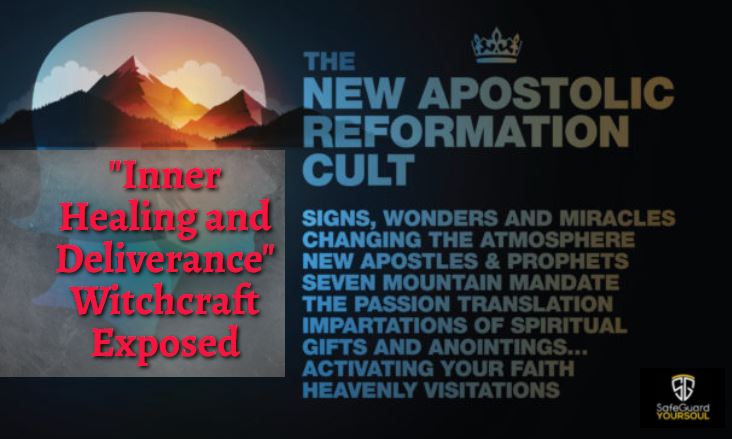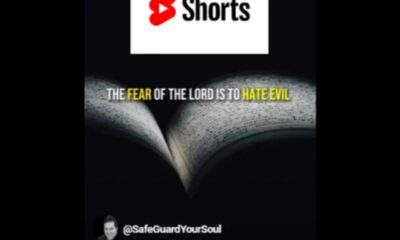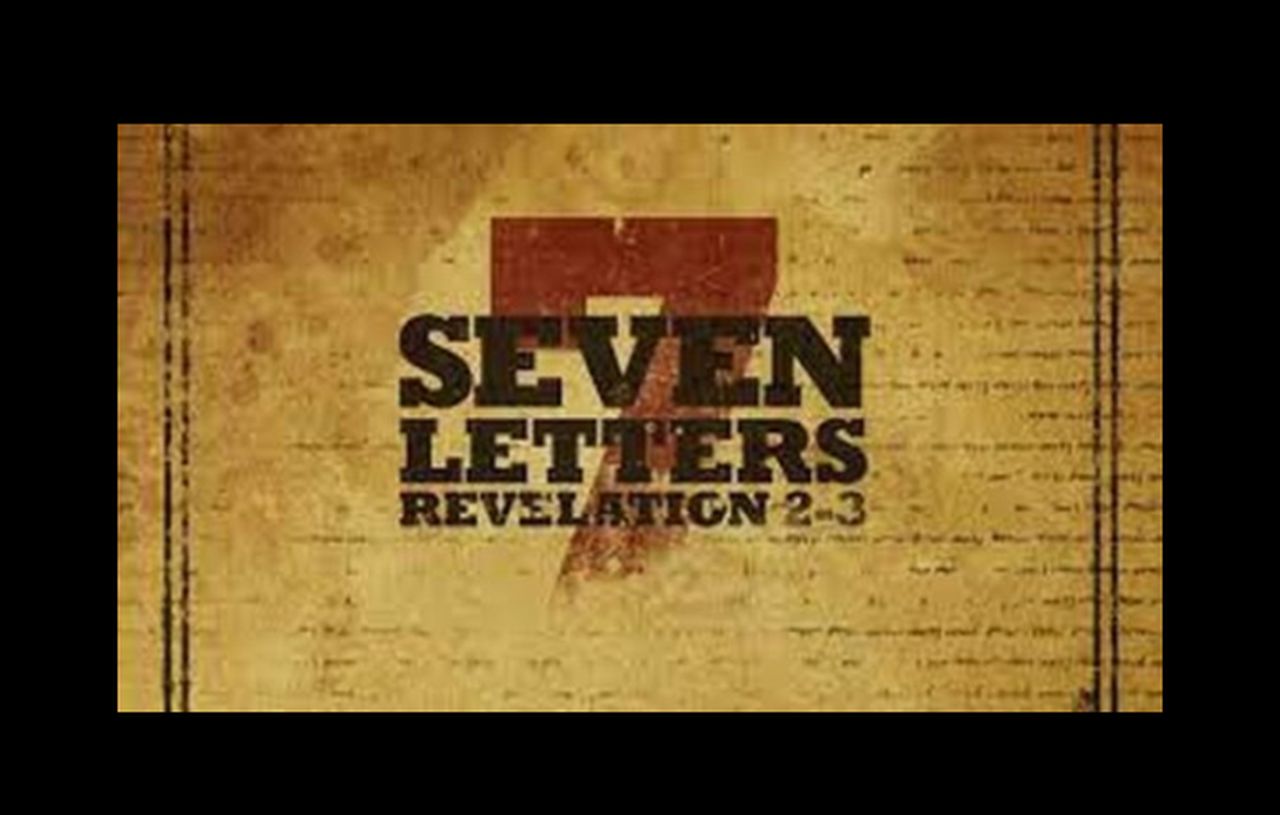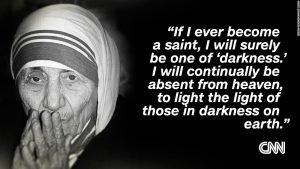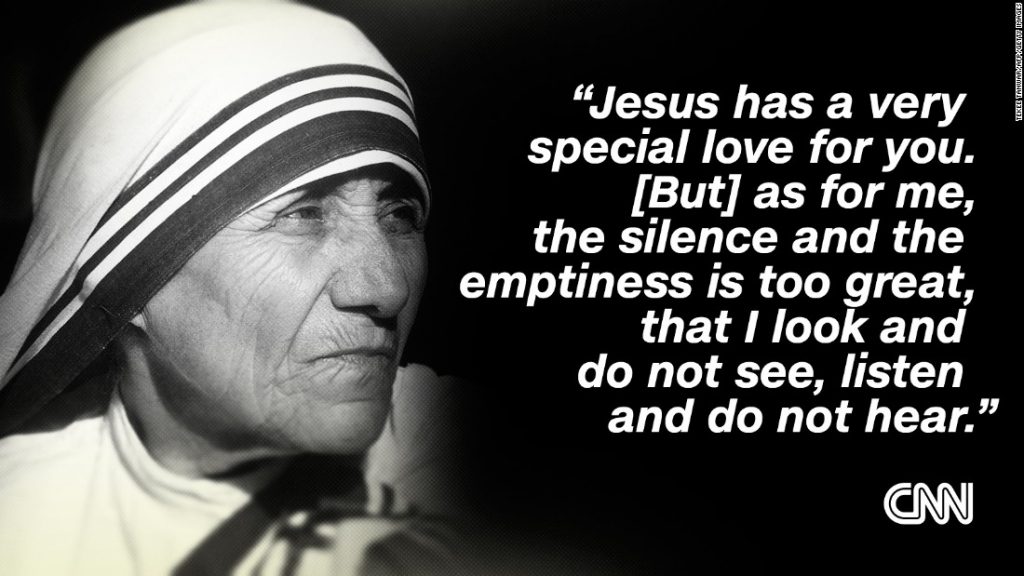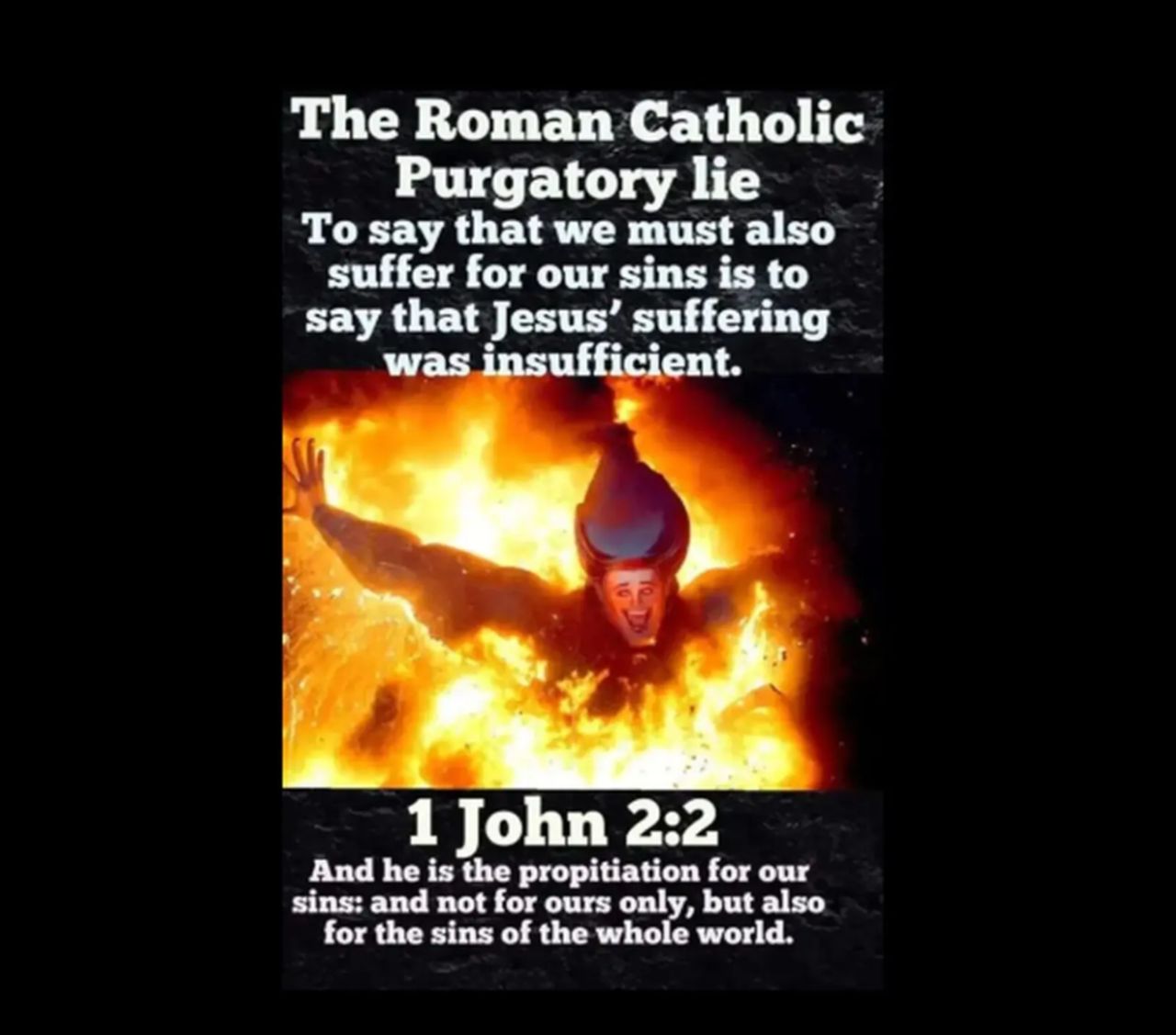Psychoheresy is the use of psychology where God has already spoken in His Word. It is using the very wisdom of men about which God has warned His people. Inner healing is a process through which someone goes in order to transform the effects of the past on the present. Inner healing involves finding painful memories of early life traumas thought to be buried in the unconscious. The inner healer guides people into reliving and recreating past events by imagining the presence of Jesus or some other significant faith figure. It is a reliving of the person’s past in his imagination. By replacing the memory of a past event with a new one, painful memories are claimed to be healed and one is supposedly set free from the grip of the past. Some of the elements of psychoheresy are used in inner healing. Therefore, inner healing is psychoheresy.
Individuals Involved
Agnes Sanford mothered the inner healing movement and directly or indirectly mentored many others. Best known followers of Sanford are Ruth Carter Stapleton, John and Paula Sandford (no relation to Agnes), Dennis and Rita Bennett, Francis MacNutt, Morton Kelsey, Richard Foster, David Seamonds, and John Wimber. Though some of the promoters are deceased, their books, which have sold millions of copies, are still a powerful influence in this movement. Moreover, these individuals have spawned thousands of other inner healers, perpetuating these teachings to millions of others. The past and present book sales testify to the popularity of this movement.
Errors of the Movement
There is a real, genuine, biblical healing and transformation of the inner person. But while one may call the Lord’s inner work “inner healing,” let us quickly add that among all the seminars, books, tapes, or workshops of which we are aware, we do not know one that is truly biblical and has not dipped into the broken cisterns of the wisdom of men about which the Bible warns believers. We would not recommend any of them because they represent a spiritually unholy combination of biblical, psychological, and even occult ideas.
Inner healing teachings often sound biblical at the beginning. Many of them even elevate excellent biblical principles, but all those with which we are acquainted eventually worship at the altars of psychology and the occult. While we cannot cover the whole spectrum of inner healing misteachings and heresies, we will discuss some of the serious errors that are common in psychoheresy.
The serious errors involve five psychological ideas, one of which is right out of the occult. John and Paula Sandford describe and summarize what Agnes Sanford was trying to do. They say:
She saw that ancient [past], unforgiven, forgotten sins [memory] buried in the heart [unconscious] could be manifested in unwanted, unseemly behaviors, which could be changed [emotion and imagery] if such sins were forgiven and the heart were cleansed.1
Two of the very important components often used in psychotherapy and in inner healing are those of the unconscious and the past. These two elements are found throughout the teachings of the inner healers. We will first discuss their use of these two psychological concepts and then deal with their dangerous and unbiblical use of memory, emotions, and imagery. These potentially perilous five psychological ideas are used by those involved in psychoheresy, which includes inner healers. Christians need to be wary of these five activities from psychoheresy wherever they are used. While this article focuses on the psychoheresy of inner healing, Christians will encounter these psychological elements elsewhere as well.
The Unconscious
Before Freud popularized the unconscious, we lived in an era of consciousness. The history of man until the nineteenth century was directed at conscious thought and action.2 Now we are in an era of the unconscious.
When inner healers use the word unconscious (and its equivalents), they use it in the Freudian sense, which is a specific mental state. The common meaning of the word unconscious is quite different from the Freudian unconscious. The unconscious, as a general term before Freud popularized it and even now, refers to the thoughts, memories, feelings, etc. of which we are not presently conscious. However, the Freudian unconscious is one in which these thoughts, memories, feelings, etc. determine one’s behavior. With this kind of unconscious, you do not do what you do or think what you think because of a conscious choice; you are driven by your unconscious.
Freud used the iceberg as his model of the unconscious. According to Freud, the entire iceberg represents the mind, and only the tip is fully accessible to the person. It includes all information and memories that are not accessible through recall, as well as present thoughts and mental activity. The huge mass beneath the waterline does not simply represent all that is presently outside conscious awareness; it supposedly contains all that drives, motivates, and determines behavior outside conscious volition. Psychologists Hilgard, Atkinson, and Atkinson point this out in their standard work on psychology.
Freud compared the human mind to an iceberg: the small part that shows above the surface of the water represents conscious experience, while the much larger mass below water level represents the unconscious—a storehouse of impulses, passions, and inaccessible memories that affect our thoughts and behavior.3
Agnes Sanford wrote:
But this much I do know: that this unseen part of me, whether submerged beneath the depths of my conscious self or rising above it, whether descending into hell or ascending into heaven, this also is myself. And if I am to be a whole person, this area of emanation or interpenetration must also be healed. I call this part of me the soul, or the “psyche.” I might instead say “the unconscious” or “the subconscious,” or “the deep mind” or the “spirit.”4
The inner healers use Freudian theory absent his name. All inner healers with which we are familiar use either the Freudian “unconscious” or some equivalent, absent the use of Freudian terms for the mind such as id, ego, and super ego. Inner healers’ favorite terms they use for the Freudian unconscious are subconscious, heart, inner heart, and the inner child, or some variation of it, from psychiatrist W. Hugh Missildine and his book The Inner Child of the Past.
Biblical Basis for the Unconscious?
There is no biblical basis for the use of the unconscious. Freud stated that the unconscious is a place where all kinds of powerful drives and mysterious motivations cause people to do what they do. The implications of such a powerful seat of urges driving people to do all kinds of things flies in the face of God holding people responsible for their actions. If people look for unconscious reasons for their behavior, they can excuse all sorts of behavior. But, the idea of the unconscious as a hidden region of the mind with powerful needs and motivational energy is not supported by the Bible or science.
We are tremendously complex beings, but psychological explanations about the inner workings of the soul are merely speculation. The only accurate source of information about the heart, soul, mind, will, and emotions is the Bible. Not only is the Bible accurate; the Lord Himself knows and understands exactly what lies hidden beneath the surface of every person. He knows and He brings cleansing to those inner parts that we may never understand. David prayed:
Search me, O God, and know my heart: try me, and know my thoughts: and see if there be any wicked way in me, and lead me in the way everlasting (Psalms 139:23-24).
Teaching a Freudian concept of the unconscious is contrary to Scripture. Rather than relying on the Word of God and the indwelling Holy Spirit to search their hearts, inner healing victims will learn to rummage around in some kind of Freudian unconscious and remain focused on the self.
If you check all the usual Bible helps having to do with words and their meanings, you will not find one that equates the heart or any other word in the Bible with the Freudian unconscious. This is one of the many theological errors in the teachings of those who attempt to integrate psychology into Christianity. The Bible focuses on the conscious mind, not on the unconscious. We see this throughout the Bible. The Bible is not deterministic in a Freudian unconscious sense. Conscious behavior and volition are hallmarks of Scripture. For example, obeying the Great Commandment is a conscious choice. God’s Spirit dwells in our hearts by faith and transforms the inner man, but these are not equivalent to a so-called unconscious. God works in us through conscious cooperation and volition on our part. When we assign motivation and action to the unconscious mind we throw out responsibility.
Scientific Basis for the Unconscious?
There is no scientific support for the Freudian idea of the unconscious. E. M. Thornton, in her book, The Freudian Fallacy, says:
This book makes the heretical claim that [Freud’s] central postulate, the “unconscious mind,” does not exist, that his theories were baseless and aberrational, and, greatest impiety of all, that Freud himself, when he formulated them, was under the influence of a toxic drug [cocaine] with specific effects on the brain.5
University of California professor Richard Ofshe, with freelance journalist Ethan Watters, has written a book titled Therapy’s Delusions. The subtitle revealing the book’s content is The Myth of the Unconscious and the Exploitation of Today’s Walking Worried. In discussing “The fallacy of the Freudian Unconscious,” they say:
While it is clear that we all engage in out-of-awareness mental processes, the idea of the dynamic unconscious proposes a powerful shadow mind that, unknown to its host, willfully influences the most minor thought and behavior. There is no scientific evidence of this sort of purposeful unconscious, nor is there evidence that psychotherapists have special methods for laying bare our out-of-awareness mental processes. Nevertheless, the therapist’s claim to be able to expose and reshape the unconscious mind continues to be the seductive promise of many talk therapies.6
The Past
Just as there is a huge difference between the usual use of the term unconscious and that of the Freudian or deterministic unconscious, so too with the use of the past in inner healing. For inner healers, the past is not merely your early life experiences, but rather your early life experiences causing, determining, or driving your behavior. Freud postulated that a newborn will go through several “psychosexual stages of development.” He named them the oral (0-18 months), anal (18-36 months), phallic (3-5 years), and genital (through puberty). Freud believed that the first five years of life and how a person maneuvered through these stages determined the person’s life. Outdoing Freud, the Sandfords go further back into the prenatal period, as we shall show shortly.
Biblical Basis for the Use of the Past?
There is no biblical basis for the use of the past (past determinants of behavior). The Bible includes the past works of God in history, because we are to remember the works of God both individually and corporately. But, regarding the Christian walk, the cross took care of the past. The walk of the believer is to be according to the new life and is therefore present and future oriented. In Philippians 3 Paul gives his religious and personal background, on which he had depended for righteousness before God. But when confronted by Jesus he saw his own wretched sinfulness, not only that he had persecuted the church, but that he was sinful to the core. He knew he could not make himself righteous by going back into his past. Therefore he declared: “This one thing I do, forgetting those things which are behind, and reaching forth unto those things which are before, I press toward the mark for the prize of the high calling of God in Christ Jesus” Phil. 3:13-14). This does not mean an inability to recall the past; it means that the past now has a different significance. Biblically speaking, attempting to fix the past is purely a fleshly activity, which when indulged in wars against the spirit.
A person need not be trapped in negative patterns of behavior established in the early years of life, for the Bible offers a new way of life. Put off the old man; put on the new. Jesus said to Nicodemus, “Ye must be born again,” and He said elsewhere that new wine could not be put into old wineskins. Jesus offers new life and new beginnings. One who is born again has the spiritual capacity to overcome old ways and develop new ones through the action of the Holy Spirit, the fruit of the Spirit, and the sanctification of the believer. One wonders why so many have given up the hope of Christianity for the hopelessness of past determinism.
Scientific Basis for the Use of the Past?
There is no predictive validity to the relationship between early life circumstances and present life. If you want to test it out, examine 100, 200, 500 kids in preschool or at whatever point in early life. Give all the tests you want and then predict what the children will be like as adults. Even Freud knew better than this. He could be postdictive (look back to connect one’s early life with one’s present adult life), but never predictive (look ahead from a child’s present life to tell how his future life as an adult will be). Given an adult with a problem, a Freudian will then interview the person and tell him how his childhood determined his present life. It is obvious that there is no science involved in this, only guess work.
Orville Brim, Jr., of the Foundation for Child Development in New York, studied this question. “Most of Brim’s career has been devoted to charting the course of child development and its relation to adult personality; recently he has become convinced that ‘far from being programmed permanently by the age of 5, people are virtually reprogrammable throughout life.’” Brim says: “Hundred and hundreds of studies now document the fact of personality change in adulthood.”7
Jerome Kagen of Harvard and co-researcher Howard Moss say they “could find little relation between psychological qualities during the first three years of life—fearfulness, irritability, or activity—and any aspect of behavior in adulthood.”8
Victor and Mildred Goertzel investigated this fallacy of early life determinants. In their book Cradles of Eminence, they report on the early environments of over four hundred eminent men and women of the twentieth century who had experienced a wide variety of trials and tribulations during their childhood.9 It is surprising and even shocking to discover the environmental handicaps that have been overcome by individuals who should have been psychically determined failures according to Freudian formulas. Instead of being harmed by unfortunate early circumstances, they became outstanding in many different fields of endeavor and contributed much to mankind. What might have been environmental curses seemed to act, rather, as catalysts to spawn genius and creativity. This study is not an argument for poor upbringing; it is an argument against psychic determinism.
Early Life and En Utero Healing: One more dimension to the inner healing practices is that of believing that very early life and even en utero healings can take place. The inner healer encourages the person to imagine early life situations and even en utero situations. And then to imagine Jesus being in that situation ministering to them.
John and Paul Sandford say:
By revelation of the Holy Spirit, we have been led to pray for thousands of traumas en utero, treating those as factual. Dramatic results in mental, emotional, and physical healings, and transpersonal behavior testify to the reality of such en utero traumas.10
This all flies in opposition to the well-known, scientific fact that memory is related to the development of the hypocampus of the brain, which is fundamental to memory formation, and therefore such memories do not exist in the brain.
The Sandfords also say:
We have found under the anointing of the Holy Spirit and found that science confirms that a baby within the womb already knows, experiences, tastes and feels everything which is going on around him. He knows whether he is wanted. He knows what is going on in the family. He knows whether there are bickerings and fightings. He hears everything that is going on in the family and inside the womb already reacts in his spirit and can make sinful choices within his spirit before he ever gets out of the womb, having already set himself in rebellious, hurtful ways before he is born.11
The Sandfords claim that if a child is conceived out of wedlock the child knows it in the womb. If the mother thought about abortion, the child knows it. If the mother hoped for a boy and is carrying a girl, the child knows it. And how do they know all these things? According to the Sandfords, the Holy Spirit told them and their experiences confirmed it. In their attempt to biblically prove their outrageous statements, the Sandfords quote Luke 1:41, “And it came to pass, that, when Elisabeth heard the salutation of Mary, the babe leaped in her womb; and Elisabeth was filled with the Holy Ghost.”
Using Bible verses out of context to support what they teach is typical of how the Sandfords twist Scripture to justify their inner healing tactics. Note that “the babe [John the Baptist] leaped in her [Elisabeth’s] womb” and that “Elisabeth was filled with the Holy Ghost.” This was a sovereign act of God that involved two persons, the “babe” (John the Baptist) and Elisabeth in response to the supernatural work of the Holy Spirit. Such a specific act of God cannot be used to prove anything generally about any other unborn child’s ability to know and experience what the Sandford’s claim. It is as unbiblical as saying that all pregnant mothers are “filled with the Holy Ghost” in the manner and for the purpose that Elisabeth was.
Luke 1:41 magnificently confirms the presence of the Messiah in Mary’s womb, and Elisabeth’s words in Luke 1:42-44, under the unction of the Holy Spirit, confirm that glorious truth. Luke 1:41 also foretells John the Baptist’s unique role to as the forerunner of Jesus. The words “the babe leaped in her womb” in verse 41 have been preceded with a great deal of information about the conception of both babies. In reference to the babe, John the Baptist, Luke 1:15 says: “For he shall be great in the sight of the Lord, and shall drink neither wine nor strong drink; and he shall be filled with the Holy Ghost, even from his mother’s womb.” This is a unique prenatal event not found elsewhere in Scripture. Also, nothing is said in Luke 1 or in all of the Bible to which the Sandfords can refer that would support their fallacious claims that babes in the womb would have the knowledge and understanding that they assume.
To reduce this supernatural heralding of the Messiah to an ordinary occurrence due to some natural ability within all unborn children is to undermine Scripture and make it say what it does not mean. Indeed, to our knowledge, no one in the history of the church has given such an egregious application of verse 41. Inner healers major in eisegesis, which is interpreting Scripture with one’s own ideas, rather than explaining what the Bible is actually saying.
Summary
Therefore, we are not determined by our unconscious and we are not determined by our past. However, those two ingredients are essential to the inner healer and are fundamental to many psychoheresies. These ideas form the theoretical base for what inner healers and many counselors do. These erroneous notions from the cauldron of psychoheresy are both taught and believed by many Christians as they attempt to address problems of living. These two mental concepts (the unconscious and the past) are detrimental to the clear teachings of Scripture. They displace God’s Word as the final authority in areas of life and godliness. Christian, beware! Be wary and avoid such heretical teachings and practices, especially when used with the Bible as in Theophostic Prayer Ministry and other inner healing ministries.
In Parts Two and Three (next issues), we discuss three more ingredients of many psychoheresies that are also used in the inner healing movement. These are the use of memory, the emotions, and imagery. While the unconscious and the past are the essential ingredients of many psychoheresies; memory, emotions, and imagery are the added collaborative dangers of inner healing.
(PsychoHeresy Awareness Letter, January-February 2007, Vol. 15, No. 1)
Endnotes
1 John and Paula Sandford.
2 Henri F. Ellenberger. The Discovery of the Unconscious: The History and Evolution of Dynamic Psychiatry. New York: Basic Books, Inc., Publishers,
3 Ernest R. Hilgard, Rita L. Atkinson, Richard C. Atkinson. Introduction to Psychology, 7th Edition. New York: Harcourt, Brace, Jovanovich, Inc., 1979, p. 389.
4 Agnes Sanford. The Healing Gifts of the Spirit. New York: Trumpet Books, 1966, p. 10.
5 E. M. Thornton. The Freudian Fallacy. Garden City, NY: The Dial Press/Doubleday & Company, Inc., 1984, p. ix.
6 Ethan Watters and Richard Ofshe. Therapy’s Delusions. New York: Scribner, 1999, pp. 38,39.
7 Carol Tavris, “Freedom to Change,” Prime Time, October 1980, p. 31.
8 Ibid., p. 32.
9 Victor and Mildred Goertzel. Cradles of Eminence. Boston: Little, Brown and Company, 1962.
10 John and Paula Sandford. Restoring the Christian Family. Plainfield, NJ: Logos International, p. 15.
11 John and Paula Sandford, “Healing the Prenatal Spirit,” sound recording


